PlantView® Risk Assessment Download Brochure

 Risk management is the identification and assessment
of significant risks and the implementation of suitable responses. Risk may be a
driver of strategic decisions, a cause of uncertainty in an organization, or intrinsically
embedded in the fabric of the organization. Managing risk will help distinguish
high-probability, low-consequence outcomes from low-probability, high consequence
outcomes and may identify areas where investment is warranted to reduce uncertainty.
Risk management is the identification and assessment
of significant risks and the implementation of suitable responses. Risk may be a
driver of strategic decisions, a cause of uncertainty in an organization, or intrinsically
embedded in the fabric of the organization. Managing risk will help distinguish
high-probability, low-consequence outcomes from low-probability, high consequence
outcomes and may identify areas where investment is warranted to reduce uncertainty.
Recognizing that the cumulative wisdom provided by experienced personnel is essential for integrating technical and nontechnical factors to produce sound decisions, the PlantView Risk module uses a Risk Assessment Grid that can be viewed across the enterprise to capture, assess and prioritize a list of risks. A Risk Assessment Grid presents risks graphically, allowing users to visualize the consequence(s) of an issue and the likely (probability) time frame of their occurrence. When there are limited risks, it supports ranking risks against each other to determine their relative prioritization. When there are too many risks to provide the same level of attention, it supports aggregating them into groups to focus on those requiring urgent remediation. The use of red, yellow, cyan and green colored cells within the Risk Assessment Grid reflects the broad classification of risks into high, moderate, low and very low priority.
Benefits
Features
Risk In Action
Risk identification establishes the exposure of the organization to risk and uncertainty. In PlantView, the identification process begins at a high level by creating Risk Issues, which include information such as the issue date, issue summary and a detailed description.

This information might be entered directly via the Risk Assessment form or provided via another module in PlantView such as Predictive Maintenance, Event Reports, Corrective Actions, Engineering Inspections or Logbooks.
Once identification has been completed, risk analysis involves a detailed consideration of risk sources, consequences, likelihood, events, scenarios, controls and their effectiveness. A subject matter expert (SME) typically performs this evaluation. The SME’s goal is to develop and document not the worst-case scenarios, but the most credible (or expected) scenarios. The SME may assign the risk to one or more consequence categories as an event can have multiple causes and consequences and can affect multiple objectives.
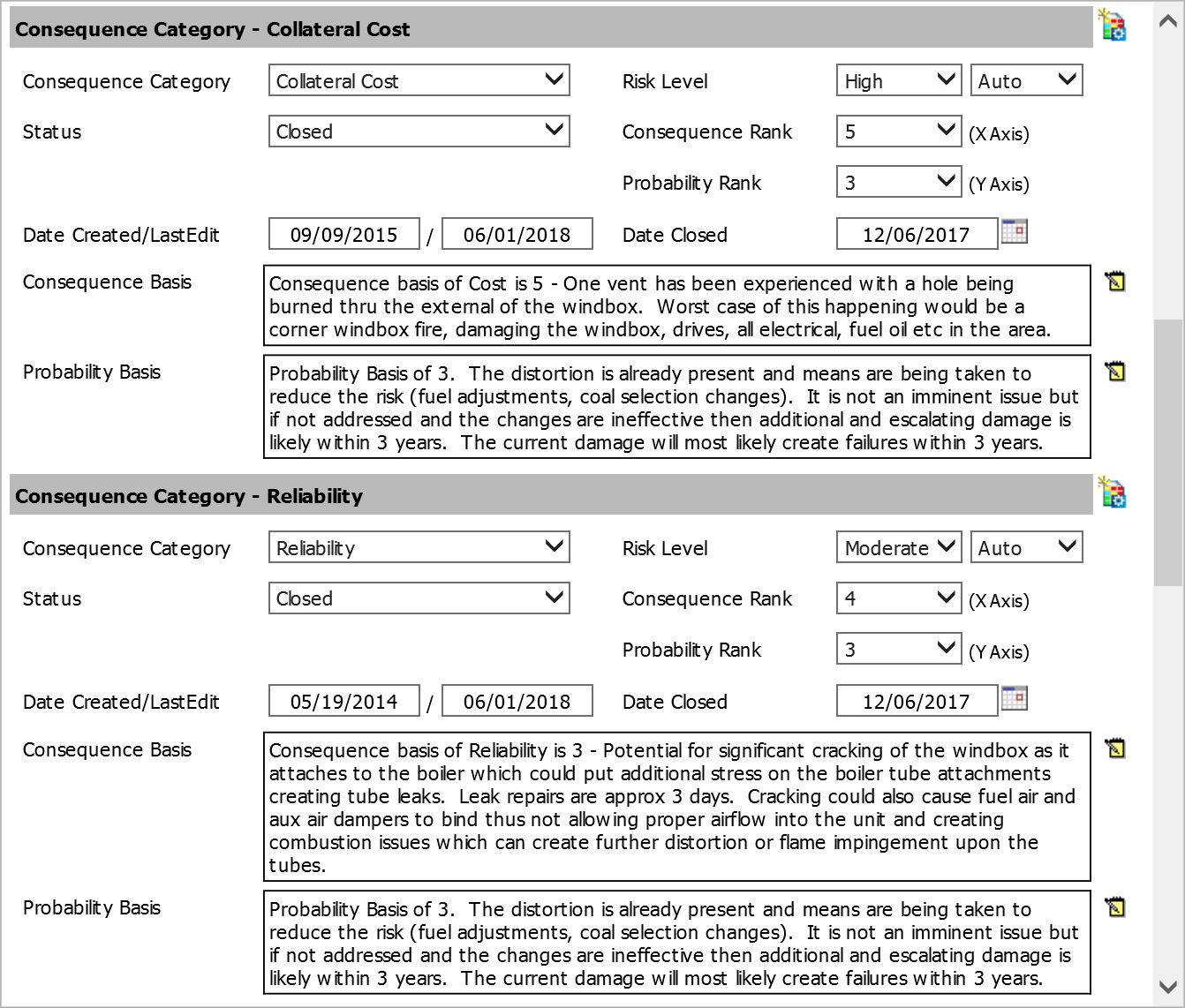
For example, a single Risk Issue could be assigned to Collateral Cost and Reliability Consequence categories -- each with a unique likelihood of occurrence. Every category is tracked through to completion by PlantView and the Risk Issue cannot be closed until all the associated categories have been resolved.
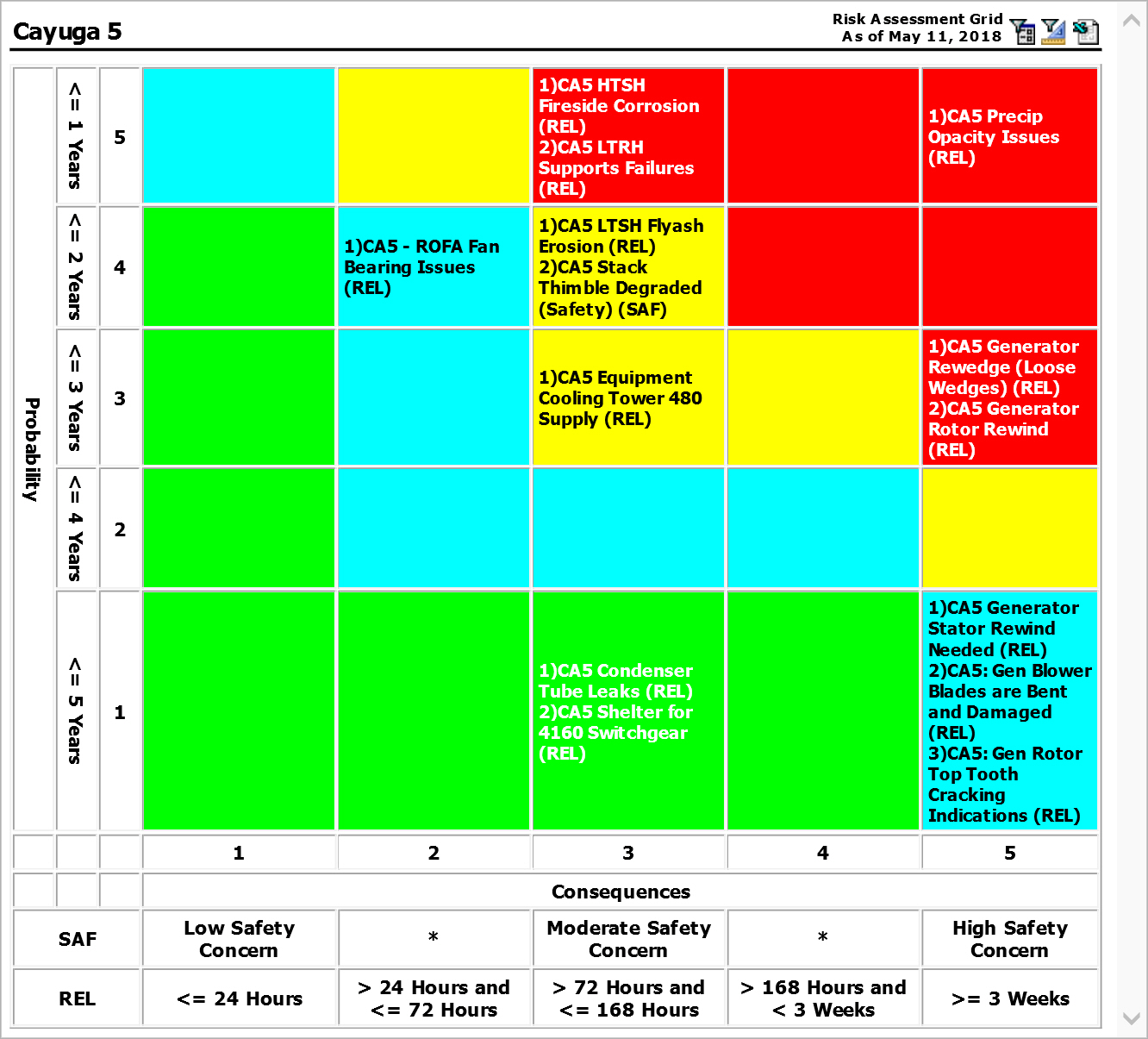
Risk Issues can be summarized at various organization levels in either a summary listor a 5x5 grid representing levels of risk (high, moderate, low and very low) in a plot of consequence vs. probability.
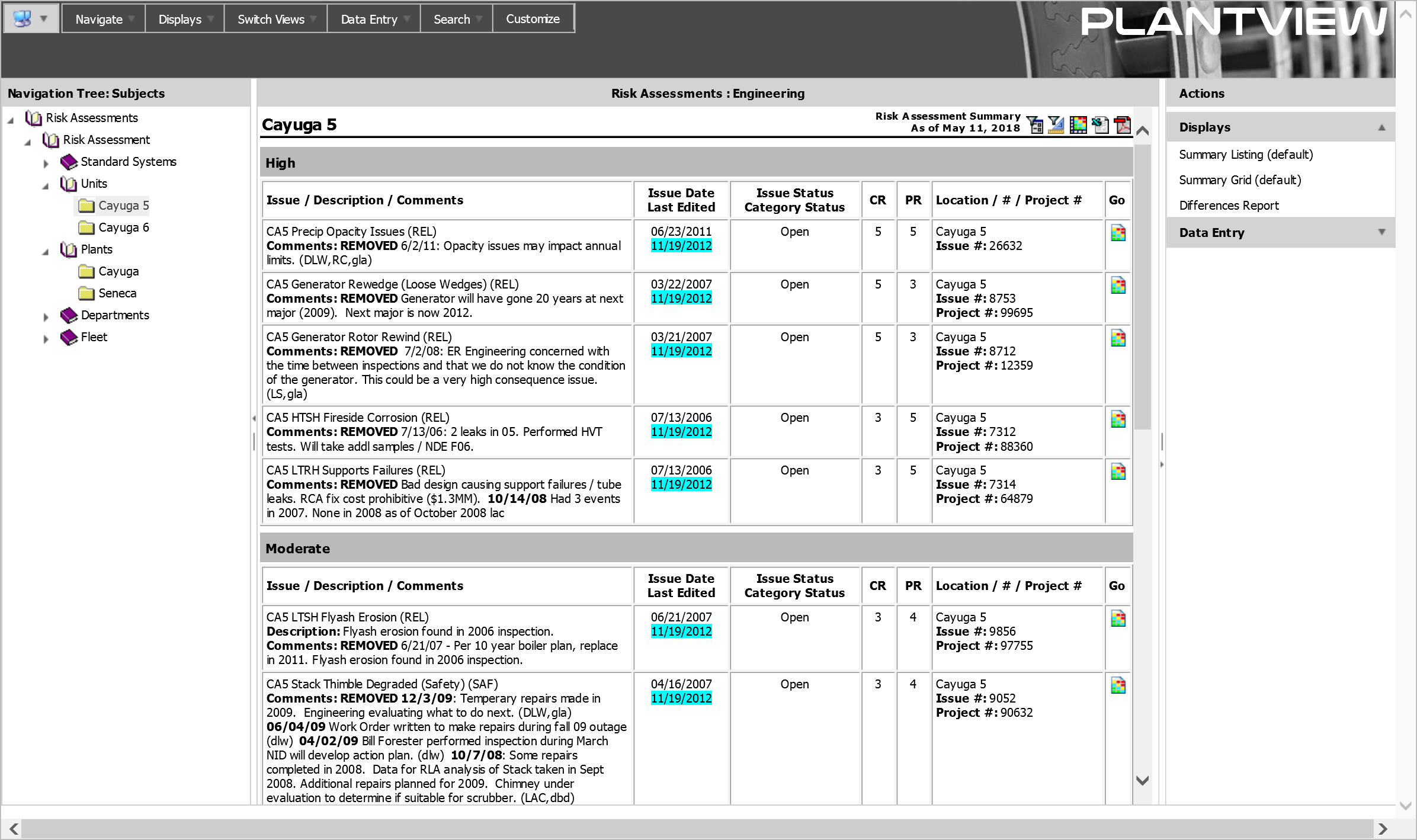
Both displays contain a comprehensive filter that includes fields such as: Issue Status, Risk Level, Consequence Category, Category Status, Issue Owner, System and multiple date fields.
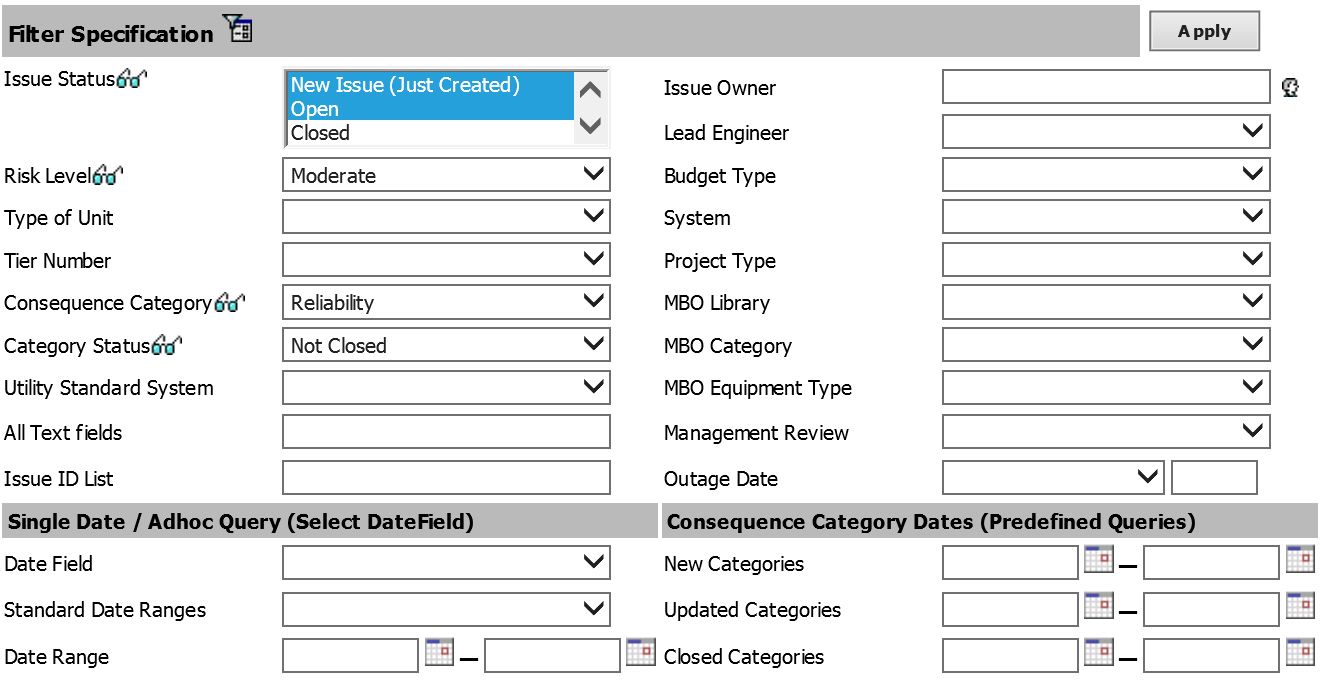
When risk issues are assigned to multiple consequence categories, a “worst case” option displays the overall risk issue based on an equivalent numerical position in the matrix. Other options allow filtering to a single category, or all categories. Since Consequence Categories maintain a status independent of the overall risk issue status, higher priority consequences can be addressed before lower priority consequences. The filter supports reviewing new, updated and closed categories within a specific time frame.
The Search feature allows open/closed risk issues and Consequence Categories to be searched across the enterprise or across similar risks that have already been remedied. All search, listings and grids can be exported to Excel or PDF reports.
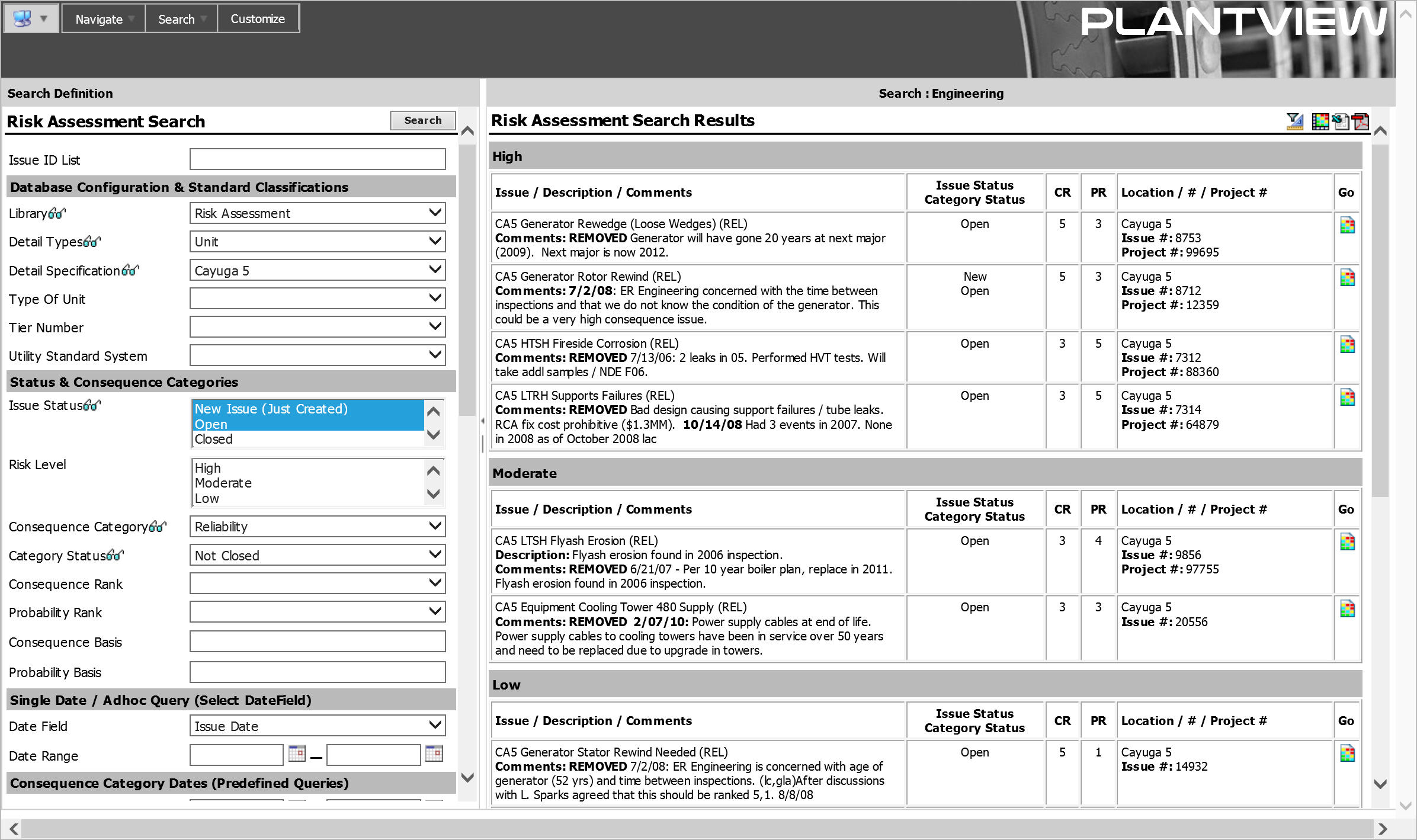
Risk Grids are an invaluable tool for organizations seeking a fast, effective and practical risk assessment process. They support the business process of assigning a consequence and probability rank to open issues to determine a prioritized list of equipment concerns. Although subjective decision making will always be part of the risk assessment process, the synergy of combining risk with predictive maintenance and equipment monitoring analysis into a single integrated system will undoubtedly yield benefits of improved reliability.